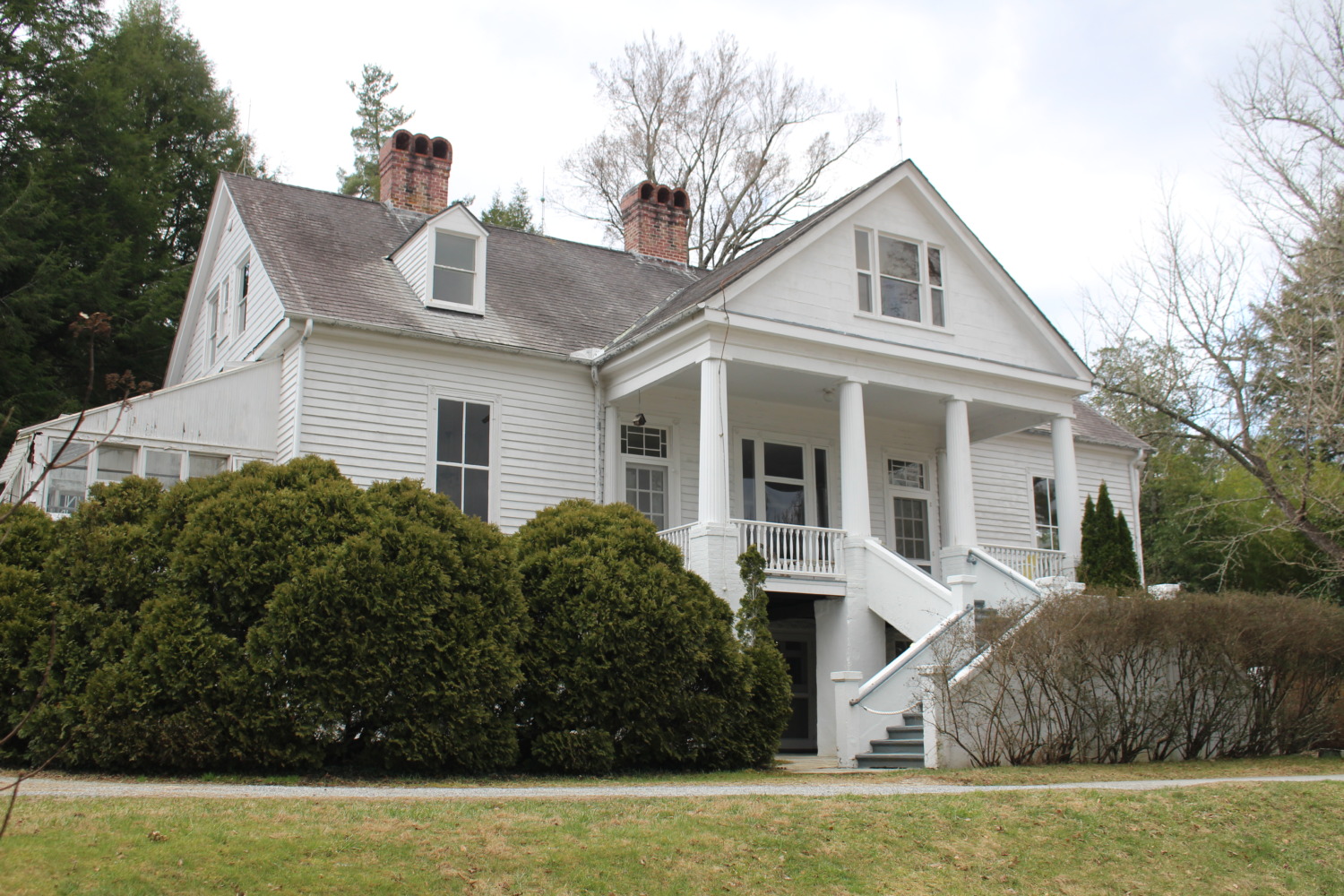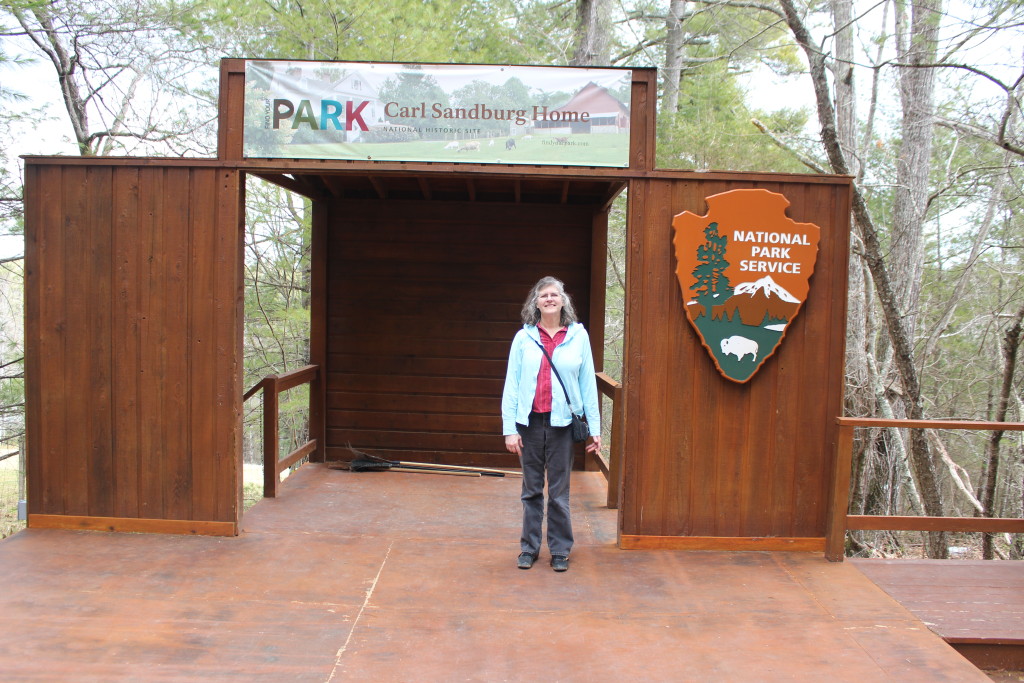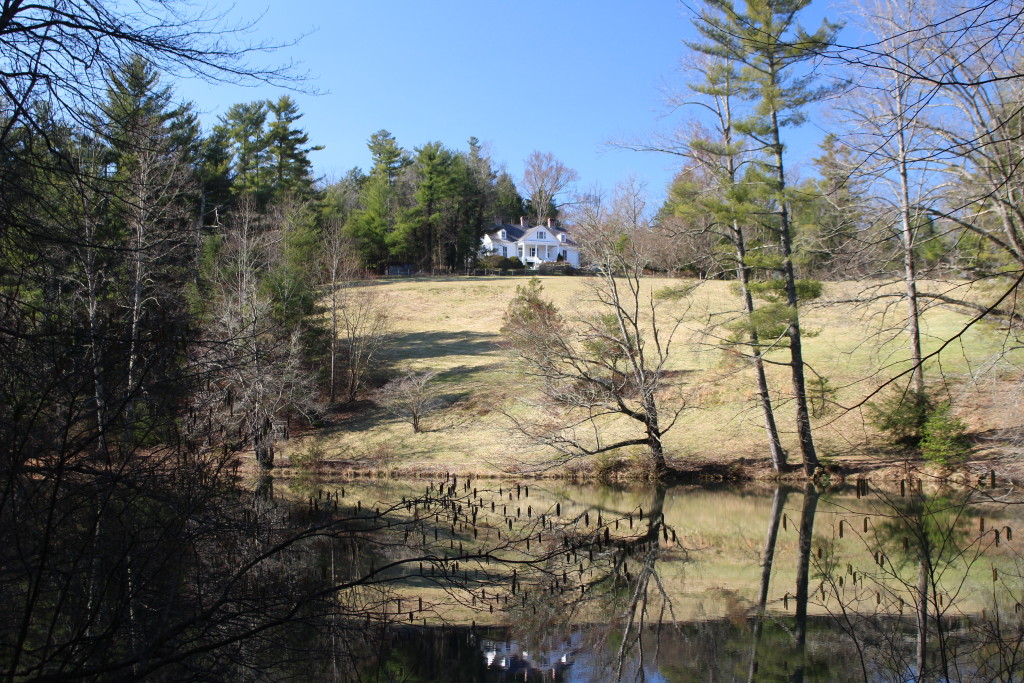On our adventure day this week, Tom and I visited the Carl Sandburg National Historic Site in Hendersonville, North Carolina. Carl Sandburg wrote a six volume biography of Abraham Lincoln, won three Pulitzer Prizes, and published 156 books. But I learned all that yesterday. Before yesterday I would have said that Carl Sandburg wrote “Fog,” the short poem that goes
It sits looking over harbor and city on silent haunches and then moves on.”
(The poem should be on more lines but I always have trouble with the line spacing in WordPress.)
Carl Sandburg also wrote the famous poem about Chicago which includes the line “Stormy, husky, brawling, City of the Big Shoulders.”
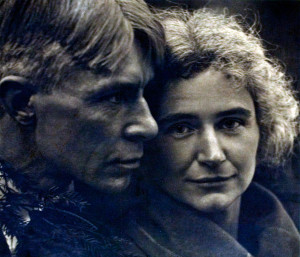 Carl Sandburg was born in 1878, the son of Swedish immigrants, and lived most of his life in Illinois. He wrote for the Chicago Daily News and published his first book of poetry in 1916. He got married in 1908 and he and his wife had three daughters. His wife, Lillian, raised champion goats and bred them for milk production. In 1945 he and his family moved to Connemara Farm, near Hendersonville. There he continued to write and delight in the company of his wife, daughters, and two grandchildren.
Carl Sandburg was born in 1878, the son of Swedish immigrants, and lived most of his life in Illinois. He wrote for the Chicago Daily News and published his first book of poetry in 1916. He got married in 1908 and he and his wife had three daughters. His wife, Lillian, raised champion goats and bred them for milk production. In 1945 he and his family moved to Connemara Farm, near Hendersonville. There he continued to write and delight in the company of his wife, daughters, and two grandchildren.
The Carl Sandburg National Historic Site encompasses the entirety of this property. The historic house was built in 1830 and the Sandburgs updated it before they moved in. They had over 17,000 books, so the whole house was full of bookshelves, looking more like a library than a home. Tom and I toured the house (undergoing renovations) and enjoyed walking the grounds. When Carl died in 1967, Lillian left everything, except some personal items, to the National Park Service with the understanding that all the books, furniture, and papers would be part of the Historic Site. Tom and I saw the guitar that Carl Sandburg played every night while the family sang along. We also saw some of the goats who are descendants of the herd that Lillian established. The whole place has a peaceful air, which is just what the Sandburgs intended when they bought it and lived there.
Tom and I watched an interview that Edward R. Murrow did with Carl and Lillian in 1954. Mr. Murrow asked Carl for his advice on writing. Carl answered, “It should be simple, easy. Put one word after another until you are through. If you look two or three words ahead, you are sunk.”
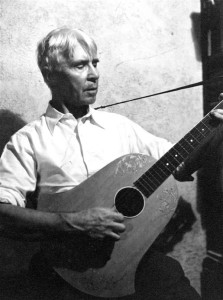 Carl Sandburg was more than just a writer. He was active in the Civil Rights Movement and was the first white man to receive the Silver Plaque award from the NAACP. He was a devoted husband, a loving father, and an indulgent and playful grandfather. His collection of American Folk Songs, “American Songbag” was published in 1927 and you can watch and listen to him singing on youtube (he was a better singer than he was a guitar player).
Carl Sandburg was more than just a writer. He was active in the Civil Rights Movement and was the first white man to receive the Silver Plaque award from the NAACP. He was a devoted husband, a loving father, and an indulgent and playful grandfather. His collection of American Folk Songs, “American Songbag” was published in 1927 and you can watch and listen to him singing on youtube (he was a better singer than he was a guitar player).
Tom and I enjoyed our visit to the Carl Sandburg National Historic Site. It made me want to read more of his poetry and his revised one-volume biography of Abraham Lincoln. Carl Sandburg was a great American and his greatness lies most in the ways he helped frame our history and culture in very American ways.

